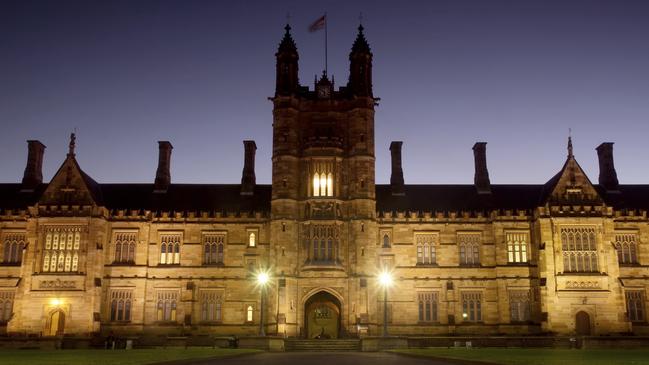
It’s also pretty early to say with any certainty what will be the long-term impact of a more recent event, the Covid pandemic, even if we narrow the focus to the effect it is having on Australian universities. Higher education was deeply affected by Covid. Nowhere near as badly hit as the travel and hospitality industries but, unlike them, universities got virtually no help from the government’s JobKeeper program.
Understandably early prognostications were dire.
Two sector veterans from the University of Melbourne – former deputy vice-chancellor (research) Frank Larkins and former senior vice-principal Ian Marshman – attracted a lot of attention with their forecast in 2020 that university cumulative revenue losses from lower numbers of international students would be between $11.5bn and $18bn.
They nominated seven universities as being in a state of “high financial risk” because of Covid revenue losses, a prediction that caused much excitement at the time.
In retrospect it was a misjudgment and Larkins and Marshman have, creditably, explained how and why things turned out far better for the university sector than expected at the time. The big difference was that international student numbers were not anywhere nearly as badly affected as was then feared.
Universities Australia, the sector peak body whose job it is to lobby government, also issued a jeremiad in 2020 telling the federal government in its pre-budget submission that accumulated lost revenue due to Covid was likely to reach $16bn by 2023.
Nothing of the sort happened, for several reasons; first, because universities were very successful in their effort to retain international students through online study from offshore; and second, because universities made strenuous efforts to cut costs. They shed staff, they won union agreement to hold back on pay rises, they cut research programs. Even some vice-chancellors and other university executives sacrificed for the cause.
Other things helped too. In 2021 the Morrison government gave a one-off $1bn top-up research grant to universities.
Universities also benefited from the distribution of shares in education agent and English test company IDP Education. Originally founded by universities, their remaining 40 per cent shareholding was owned through a holding company.
But in 2021 this parcel was distributed to the individual university owners, giving each of them an asset worth at least $50m at the time.
So is that it? Is the Covid story all over? With all due acknowledgment to Chou En Lai, the answer is no. It’s way too early to say.
Interestingly the biggest impacts of Covid on university bottom lines have not been the direct effects that appeared to be so unavoidable in 2020. Two secondary effects that nobody, as far as I am aware, predicted in 2020 have carried more weight.
One was that a strong sharemarket rally gave many universities (those with large investments) windfall gains in 2021, and then a reversal in 2022 removed those gains. But this valuation seesaw, while disruptive, is not causing real lasting pain.
The share rally, as well as a bravura performance in growing its international student market, propelled the University of Sydney to its famous $1bn surplus in 2021, only a year after it cried poor and pleaded for JobKeeper assistance.
We have yet to see what Sydney’s financial results look like in 2022 after taking an investment haircut. But its operating result won’t be anywhere near as good.
We already know that three other Group of Eight universities – Melbourne, Monash and Queensland – have suffered massive deterioration in their 2022 results compared with 2021.
The other secondary effect of Covid on university finances is inflation. It has sparked a round of wage demands that many universities are not in a good position to deal with. It also means they have higher costs and the government’s funding system for student places lags in compensating for inflation.
So far we know the 2022 operating results of only nine of the 38 public universities – seven from Queensland plus Melbourne and Monash – and only one of them is in surplus.
So we can expect a sea of red ink in the 2022 results, something that was avoided at the height of Covid. But universities will be able to recover from this.
There are other longer-term Covid impacts that are not so visible in the bottom line. Keith Houghton, chief academic strategist at the Higher Education and Research Group, says universities, “in general but not universally”, handled the financial consequences of Covid well.
“In 2020, this meant some tough decisions were made involving some highly effective and occasionally necessarily aggressive cost management reflecting revenue shortfalls,” he says.
“The cost containment will likely have had consequences, including for research programs, the effect of which may still not be fully observable.”
In other words the magnitude of the 2020 cuts is still being felt. They propped up the financial results at the time but research and teaching programs have suffered and will take time to heal.




A famous but apocryphal story about Mao’s lieutenant Chou En Lai relates that, when questioned by Henry Kissinger about the impact of the French Revolution, Chou replied that it was too early to say.